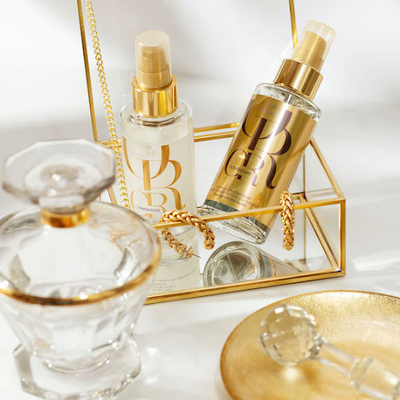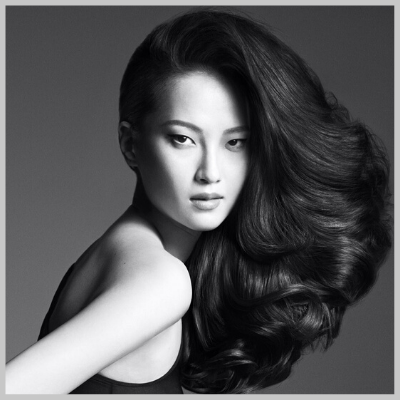Editor’s Note: This article was originally published on Wella Professionals. Minor edits have been done by Tousled Online Magazine editors.

Hot tools are the answer to some of the most covetable hairstyles out there – from super-sleek, straight strands, to voluminous blow-dries, to bouncy, defined curls. But the ease, speed, and effectiveness of heat styling come at a cost; heat-damaged hair is an all-too-common problem for those who love to style regularly. The good news is, that while you can’t reverse frazzled hair, you can work to rehydrate it and, over time, restore it back to health.
It may not be a quick process, but with a few trims and the tricks below, your heat-damaged hair will start to look healthy and hydrated once more…
So, How Do You Fix Damaged Hair From Heat?
1. Get Frazzled Ends Trimmed Off
Split ends are common when hair has been damaged by heat styling, so your first (and most effective) course of action should be to book in for a trim. As long as the ends aren’t too stressed, your hairdresser may be able to tidy those split ends without taking off too much length, thanks to a technique known as ‘dusting’. This quick trick sees ragged strands targeted and only the very tips are taken off, allowing you to keep your signature style – sans those dry, straggly ends. However, your hairdresser may recommend cutting off a little bit more if the hair is deeply damaged. Just remember it will grow back, so see it as an opportunity to give your hair a fresh start.
2. Pack In Plenty Of Moisture
Think how dry your skin can get when you’re dealing with a sunburn. The same happens to your hair when it’s exposed to too much heat, so adding in extra moisture is a must.
3. Be Gentle When Washing And Styling
Any kind of hair damage requires you to be a little gentler when washing and styling your hair. You don’t want to be tugging or rubbing, as the added friction can make your locks even more knotted and frayed. Keep this in mind when you massage in your shampoo and conditioner and take the time to delicately smooth products through. Your hair will thank you in the long run.
It’s especially important to be careful when working through the mid-lengths and ends of hair, as these sections experience the biggest brunt of repeated heat damage (more so than those newly grown roots). That gentle touch extends to combing out tangles, too; you should tease out knots in small sections, starting from the bottom first, then gradually working your way up to the roots.
4. Style With Nourishing Oils And Lotions
As well as adding extra hydration to your everyday care routine, you can also level up moisture with 2-in-1 stylers that enhance nourishment. One of Wella Professionals’ favorites for care and styling include a drop of the gloss-boosting Oil Reflections Luminous Smoothing Oil. It is moisturizing and it makes locks more manageable, so you can enjoy smoother, softer strands that are easier to style. If you have fine or thin hair, try the Elements Renewing Leave-In Spray, which has a light, liquid-like texture that won’t drag your style down.
5. Opt For Heat-Free, Low-Tension Hairstyles
Scaling back on heat styling is crucial for your heat-damaged hair, but that doesn’t mean you have to compromise on frizz-free locks. Simply embrace heat-free coiffing with the styling products above. Apply your chosen oil, lotion, or balm through the mid-lengths and ends of your hair, then twist it into a low, loose bun or braid for waves, or plop your hair overnight to boost the shape of your curls. The goal is to air-dry your hair with a low-tension style, so your strands won’t snap. That means making sure any braids or twists you create aren’t pulling on those fragile lengths. The type of ties and clips you use for these styles is important too, so reach for soft, silky scrunchies, scarves, and even pillowcases, which will be gentler than elastics and cotton.
6. Protect From Future Heat Damage
While the steps above will help to rehydrate heat-damaged curls, waves, and straight hair, they can only be truly effective if you’re safeguarding strands from future harm. And, unless you plan to leave your hairdryer and hot tools behind for good, this means a heat protection spray is essential in your kit.









